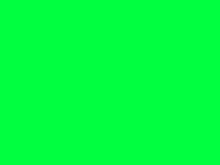
This article has multiple issues. Please help improve it or discuss these issues on the talk page. (Learn how and when to remove these template messages)
The topic of this article may not meet Wikipedia's general notability guideline. Please help to demonstrate the notability of the topic by citing reliable secondary sources that are independent of the topic and provide significant coverage of it beyond a mere trivial mention. If notability cannot be shown, the article is likely to be merged, redirected, or deleted.Find sources: "Erin" color – news · newspapers · books · scholar · JSTOR (October 2018) (Learn how and when to remove this template message)This article relies largely or entirely on a single source. Relevant discussion may be found on the talk page. Please help improve this article by introducing citations to additional sources.Find sources: "Erin" color – news · newspapers · books · scholar · JSTOR (October 2018)
(Learn how and when to remove this template message)
| Erin | |
|---|---|
| Hex triplet | #00FF40 |
| sRGBB (r, g, b) | (0, 255, 64) |
| HSV (h, s, v) | (135°, 100%, 100%) |
| CIELChuv (L, C, h) | (88, 129, 130°) |
| Source | Maerz and Paul[1] |
| ISCC–NBS descriptor | Vivid yellowish green |
| B: Normalized to [0–255] (byte) | |
Erin is a color that is halfway between green and spring green on the color wheel. It is named after Erin, a poetic name for Ireland.
One of the earliest known uses of the word "erin" to describe a color appears in the poetry of Jane Johnston Schoolcraft (1800–1842). In a poem titled To the Pine Trees, Schoolcraft reflects on her arrival back to North America after spending years in England she writes "Not all the trees of England bright, / Not Erin's lawns of green and light / are half so sweet to memory's eye, / As this dear type of northern sky."[2]